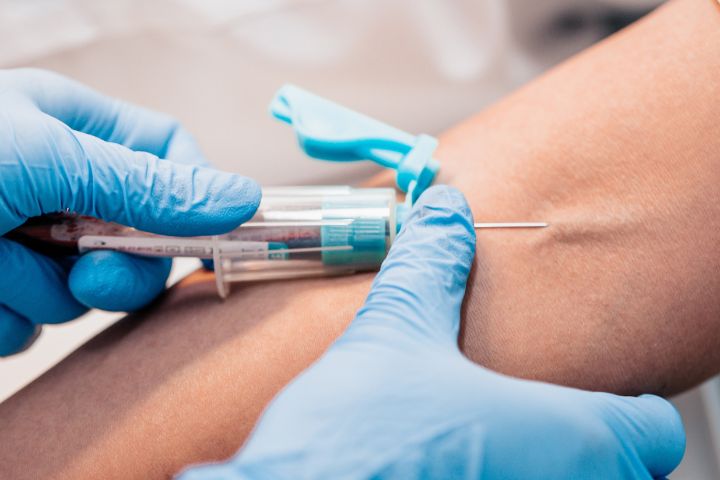Excitement About Northeast Medical Institute - New Haven Campus Phlebotomy Course & Cna Class
Excitement About Northeast Medical Institute - New Haven Campus Phlebotomy Course & Cna Class
Blog Article
Northeast Medical Institute - New Haven Campus Phlebotomy Course & Cna Class - Truths
Table of ContentsThe Ultimate Guide To Northeast Medical Institute - New Haven Campus Phlebotomy Course & Cna Class9 Simple Techniques For Northeast Medical Institute - New Haven Campus Phlebotomy Course & Cna ClassNortheast Medical Institute - New Haven Campus Phlebotomy Course & Cna Class for BeginnersNortheast Medical Institute - New Haven Campus Phlebotomy Course & Cna Class for DummiesNortheast Medical Institute - New Haven Campus Phlebotomy Course & Cna Class Fundamentals ExplainedSome Of Northeast Medical Institute - New Haven Campus Phlebotomy Course & Cna Class
The usage of such devices must be come with by various other infection prevention and control practices, and training in their usage.For setups with low resources, price is a driving consider purchase of safety-engineered tools - CNA Training. Where safety-engineered devices are not available, proficient use of a needle and syringe is appropriate. Unintentional exposure and details info concerning an incident need to be taped in a register. Assistance services should be advertised for those who undergo accidental direct exposure.
One of the vital pens of high quality of treatment in phlebotomy is the participation and cooperation of the client; this is equally useful to both the wellness employee and the client. Clear details either written or spoken should be offered per client that undergoes phlebotomy. Annex F offers sample text for discussing the blood-sampling treatment to a client. labelling); transportation conditions; interpretation of results for medical administration. In an outpatient division or facility, provide a specialized phlebotomy cubicle containing: a clean surface area with two chairs (one for the phlebotomist and the other for the individual); a hand laundry container with soap, running water and paper towels; alcohol hand rub. In the blood-sampling area for an outpatient department or facility, give a comfy reclining sofa with an arm remainder.
Some Ideas on Northeast Medical Institute - New Haven Campus Phlebotomy Course & Cna Class You Should Know
Ensure that the signs for blood sampling are plainly defined, either in a created procedure or in documented directions (e.g. in a laboratory kind). Collect all the tools needed for the treatment and location it within safe and simple reach on a tray or cart, guaranteeing that all the things are clearly noticeable.
Present on your own to the client, and ask the patient to mention their full name. Examine that the research laboratory kind matches the person's identity (i.e. match the client's information with the laboratory kind, to ensure accurate recognition).
Make the patient comfortable in a supine position (preferably). Location a tidy paper or towel under the patient's arm. Talk about the test to be carried out (see Annex F) and acquire verbal permission. The person has a right to reject an examination at any moment prior to the blood tasting, so it is necessary to ensure that the individual has understood the procedure.
Not known Details About Northeast Medical Institute - New Haven Campus Phlebotomy Course & Cna Class
Expand the person's arm and check the antecubital fossa or lower arm. Locate a blood vessel of an excellent size that shows up, straight and clear. The representation in Area 2.3, reveals common settings of the vessels, but lots of variants are feasible. The average cubital vein exists between muscular tissues and is generally the most simple to penetrate.
DO NOT place the needle where capillaries are drawing away, since this increases the possibility of a haematoma. The capillary needs to show up without applying the tourniquet. Locating the vein will assist in establishing the correct dimension of needle. Use the tourniquet about 45 finger sizes over the venepuncture site and re-examine the vein.
Samplings from main lines bring a threat of contamination or erroneous research laboratory examination results. It is appropriate, yet not suitable, to attract blood samplings when initial introducing an in-dwelling venous device, prior to connecting the cannula to the intravenous liquids.
Northeast Medical Institute - New Haven Campus Phlebotomy Course & Cna Class Can Be Fun For Everyone
Failure to enable sufficient contact time raises the danger of contamination. DO NOT touch the cleaned up website; in particular, DO NOT put a finger over the blood vessel to assist the shaft of the revealed needle.
Ask the individual to form a clenched fist so the veins are a lot more popular. Go into the blood vessel quickly at a 30 level angle or much less, and proceed to present the needle along the capillary at the easiest angle of access - CNA Classes. When enough blood has been gathered, release the tourniquet prior to taking out the needle
A Biased View of Northeast Medical Institute - New Haven Campus Phlebotomy Course & Cna Class
Withdraw the needle gently and use mild stress to the website with a clean gauze or dry cotton-wool round. Ask the client to hold the gauze or cotton woollen in place, with the arm expanded and elevated. Ask the person NOT to bend the arm, because doing so triggers a haematoma.

Our Northeast Medical Institute - New Haven Campus Phlebotomy Course & Cna Class Diaries
Do not push the syringe plunger due to the fact that added pressure raises the risk of haemolysis. Where possible, keep the tubes in a shelf and move the rack towards you. Inject downwards right into the appropriate coloured stopper. DO NOT remove the stopper due to the fact that it will certainly release the vacuum. If the sample tube does not have a rubber stopper, infuse incredibly gradually right into television as decreasing the pressure and speed made use of to move the sampling reduces the danger of haemolysis.

Report this page